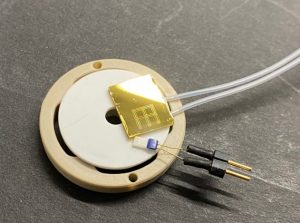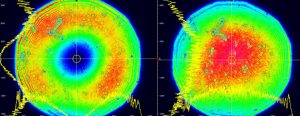The aim of this project is to study light-matter interaction under the extreme field confinement as obtained in plasmonic cavities such as Nanoparticles-on-Mirror (NPoMs). Biphenyl-4-thiol molecules embedded in the gap region of such structures are being studied as multimode molecular thermometers interrogated remotely by surface-enhanced Raman spectroscopy (SERS), while the electronic temperature is assessed using anti-Stokes photoluminescence (PL) measurements.
Several research questions are being addressed: How can vibrational temperature and electronic temperature be extracted accurately, and how are they related? What is the impact of plasmonic resonance and photo-excited carriers on nanoscale temperature? How to use the change in temperature as a measure of the absorption cross section? How to peer into nanogaps to measure the near-field temperature distribution?
Raman and PL spectroscopy is carried out under environmental heating and vibrational pumping to calibrate the response of the nano-thermometers, despite the narrow range of temperatures and powers which can be addressed without damaging. Evidence of mode-selective coupling has been also found by field reconstruction along the sample’s plane, experimentally obtained from the Stokes signal of specific vibrational modes.
PhD student: Valeria Vento
Collaboration: Dr. Philippe Roelli, CIC nanoGUNE San Sebastian, Spain
References: Roelli, Nat. Nanotech. 11, (2016) https://www.nature.com/articles/nnano.2015.264
Funding: ERC Consolidator Grant QTONE

Fig. 1: Gold NPoMs sample with the markers visible on the surface, glued on a ceramic hotplate together with a temperature sensor.

Fig. 2: Profiles of the excitation beams. Left: radially or azimuthally polarized beam. Right: linearly polarized beam.